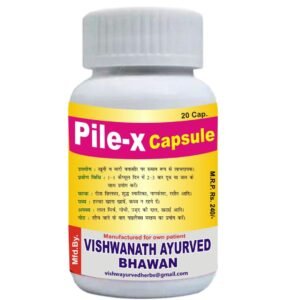We deliver to you every day from 7:00 to 23:00
The best discounts this week
Every week you can find the best discounts here.
M.M.N. Churn
Thyronil Capsule
STONE-X Capsule
Soranil Capsule
Kesh Care Capsule
Pile-X Capsule
Free Shipping on All Orders Over $100
What is Cholesterol?
Cholesterol is a waxy compound found in animal-based food products that we consume as well as inside our bodies’ cells. The body needs cholesterol in order to function properly however, we can produce all the cholesterol the body requires. Cholesterol can be used to create vitamins D and hormones. It is also involved in digestion.
There are three major kinds of cholesterol found within the body:
- HDL, also known as high-density lipoprotein. HDL. It is often referred to as “good” cholesterol, HDL assists in removing excess cholesterol in your blood.
- Lipoprotein with low density, also known as LDL. LDL is known as the bad cholesterol. It may cause accumulation of plaque within the blood vessels.
- VLDL, also known as Very Low Density Lipoprotein. VLDL. VLDL can also be a catalyst for plaque formation.
Another component of laboratory tests for lipids is the triglyceride level. Triglyceridesare an exact kind of fat found in the blood. Certain risk factors could increase the risk of having elevated triglycerides. For instance, you may have excess body fat, or uncontrolled type 2 diabetes. Extra calories, specifically from refined carbohydrates, such as cigarettes, added sugars and drinking alcohol can raise the triglycerides.
If there’s too much cholesterol present in your body, the starts to build up. The buildup of wax, referred to as plaque, sticks to insides of blood vessels. When the arteries narrow and clog, it becomes difficult for circulation of blood through them. This blockage can cause a stroke, blood clot and heart diseases.
Am I at Risk?
A variety of factors can increase your risk of having high cholesterol, such as:
- Genetics High cholesterol is a common trait in certain families.
- Age As we get older the cholesterol levels rise.
- Medicines: Certain drugs can elevate cholesterol levels.
- Obesity The people who have an elevated BMI are more at risk of developing high cholesterol.
- Diet Consuming a lot of trans and saturated fats may increase LDL levels for cholesterol.
- Inactivity Activity can help raise HDL cholesterol.
- Smoking Tobacco products reduce HDL and raise LDL. Smoking causes higher cholesterol is more evident for women.
I Have High Cholesterol. Now What?
Anyone with high cholesterol could benefit from a heart-healthy diet. However, your doctor may provide additional assistance to control your cholesterol levels. This could include an anti-cholesterol medication, in case your cholesterol is elevated because of genetics. If you’re at an increased risk of having high cholesterol, small lifestyle changes can lower your chance. This includes eating a heart-healthy diet, staying physically active and maintaining or achieving the weight of your body in a healthy way.
In the case of an eating regimen that is healthy there are four changes to your diet that can help to keep your cholesterol levels in check.
Enjoy food items by using Plant Sterols and Stanols
Certain foods — such as vegetables, fruits oil, vegetable oils, seeds, nuts and whole grains contain plant starols and the stanols. Consuming foods that are rich in these elements can reduce the total as well as LDL cholesterol levels. For a greater intake of these substances be sure to look for food items which are fortified with plant sterols as well as Stanols. For instance, cereals, orange juice and breakfast bars can be enriched.
Limit Your Intake of Saturated Fat
Saturated fats are mostly found in animal-based food products like meats, dairy products with whole fats along with some tropical fats, like coconut oil. A higher intake of saturated fat have been proven to raise LDL cholesterol levels. Studies have also demonstrated that replacing saturated fat sources with unsaturated fats may aid in reducing the overall as well as LDL cholesterol levels. In order to reduce the amount of saturated fats:
- Cook using vegetable oils like olive or canola, sunflower, Safflower.
- Consume foods that are rich of omega-3 fats, such as walnuts, salmon, and flaxseed ground.
- Select fat-free or low-fat dairy products like skim milk or 1% and low-fat or non-fat yogurt, as well as low-fat cheeses, like reduced-fat mozzarella and part-skim mozzarella.
- Change the butter and Lard with vegetable oils, which contain unsaturated fats.
Select Lean Protein Foods
Protein foods with lean proteins provide less energy from fat. When choosing lean cuts:
- Examine the package for words round or loin.
- Remove the skins from chicken and turkey in order to cut down on saturated fat.
- Avoid marbled, fatty meats, deep-fried or fried food items and other meals which are high in saturated fats, for example organ meats
- Make healthier choices when dining out by choosing meals that are broiled, baked, or grilled.
Look for Soluble Fiber
Dietary fiber is present in fruits, vegetables lentils, beans and whole grains. These foods rich in nutrients provide two kinds of dietary fiber both soluble and insoluble. Both are essential to maintain healthy living. Consuming adequate amounts of fiber from a range of food items is essential for everyone.Research has proven that soluble fibers, in particular those from vegetables, fruits beans, lentils, and whole grains, can aid in lowering LDL cholesterol. The stomach is where soluble fiber creates an emulsion-like substance that helps to bind the cholesterol in your diet from the foods you’re eating. Therefore, eat plenty of fruits and vegetables:
- Consume a variety of colored vegetables and fruits.
- Choose fruits and vegetables which also contain the soluble fiber. For example, figs Brussels sprouts, peaches mangoes, apricots and carrots and oranges.
- Switch to more plant-based or vegetarian meals by incorporating proteins such as lentils, beans, and soy-based food items.
- The focus should be on all forms of fruits and vegetables, which include frozen, fresh dried, canned and frozen varieties.
- Find canned fruit filled with water or with their own juice.
- Choose canned vegetables that are low in sodium or those that are free of added salt.
Whole grains are also an excellent source of the benefits of fiber in your diet:
- Consume barley (not pearled) and oats, both provide the soluble fiber.
- Be sure that the label on your bread reads 100% whole grain or mentions whole grains in the primary ingredients.
- Reduce refined carbs, particularly the sources that add sugar to your diet like sweets and beverages that contain sugar.
A word of caution: when you increase your intake of fiber be sure to increase your intake of water. This can help lower the risk being constipated. If you’re finding it difficult to obtain enough fiber through your diet Ask your doctor prior to taking a fiber supplement.
Recent Posts
- Green Life Capsule Complete Ayurvedic detox, Immunity booster and Metabolic Revitalization Modern-day wellness
- Herbostrep Capsule: A Powerful Herbal Immunity Booster for Cough, Cold, and Respiratory Wellness
- Joint Care Capsule – The Ayurvedic Solution for Stronger, Pain-Free Joints Naturally
- Kayakalp Capsule Plus: The Ayurvedic Secret to Glowing Skin and Inner Purity
- Kayakalp Plus Powder by Vishwanath Ayurved: The Ayurvedic Secret to Glowing Skin and Full-Body Detox












